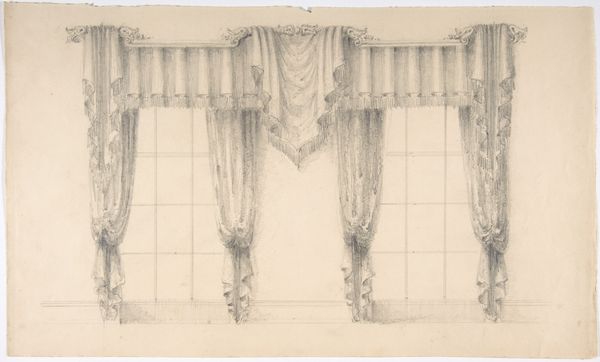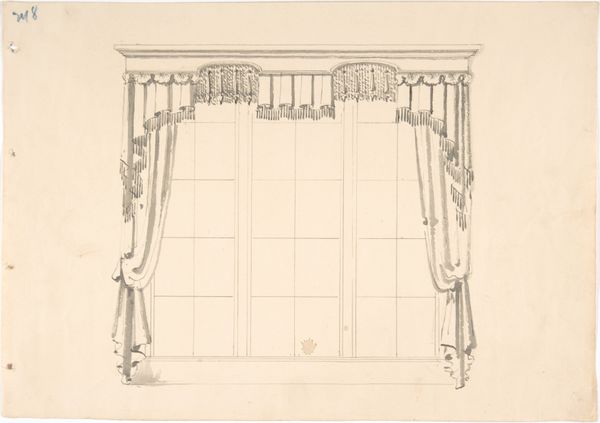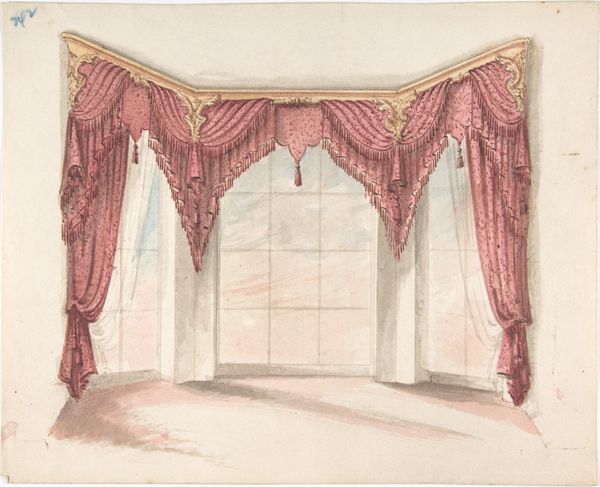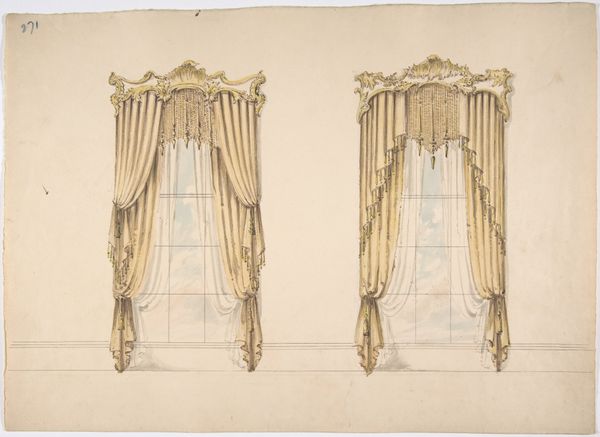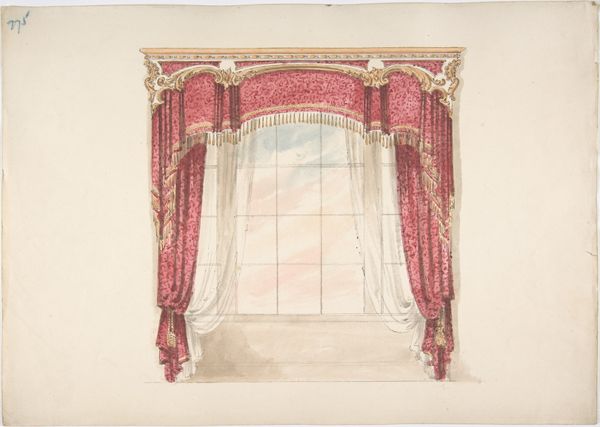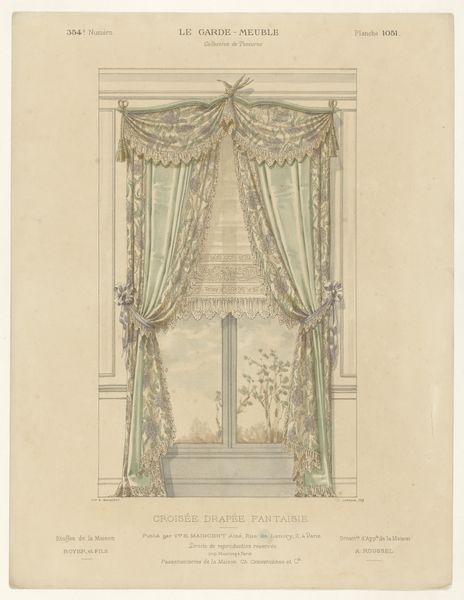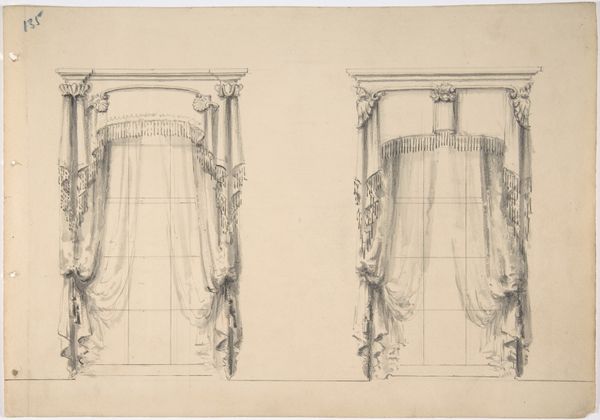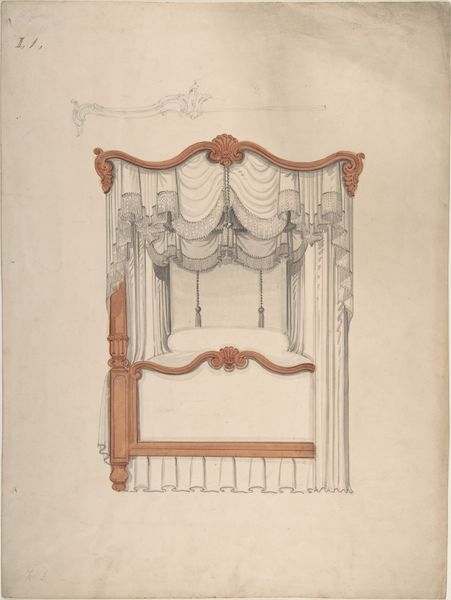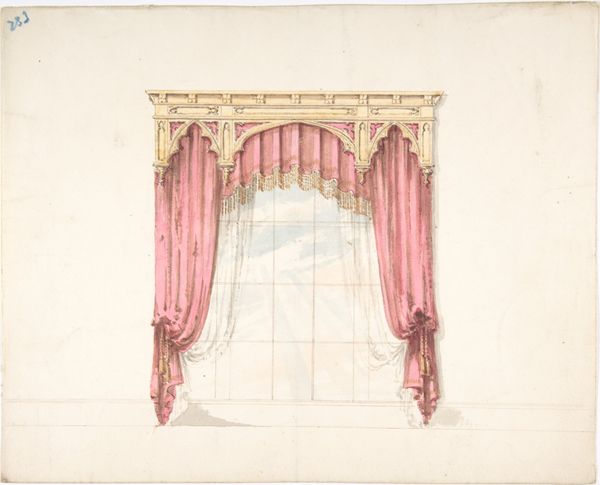
Design for Green Curtains with Green Fringes and a Gold Pediment 1800 - 1850
0:00
0:00
drawing, print, paper, watercolor
#
drawing
# print
#
paper
#
watercolor
#
intimism
#
decorative-art
#
watercolor
Dimensions: sheet: 7 1/2 x 12 5/16 in. (19 x 31.2 cm)
Copyright: Public Domain
Editor: This watercolor and print, entitled "Design for Green Curtains with Green Fringes and a Gold Pediment," dates back to sometime between 1800 and 1850. It’s currently housed at the Metropolitan Museum of Art. The piece is intriguing; its formalism almost overshadows its functionality. What structural elements stand out to you? Curator: Note the interplay between the linear rigidity of the window frame and the fluid drapery of the curtains. The artist employs watercolor to meticulously render the texture and fall of the fabric, contrasting the organic curves against the geometric structure. Do you observe how the repeated vertical lines contribute to the composition? Editor: Yes, I see that the verticals create a sense of order, but I'm also drawn to the curvilinear fringes that soften the overall effect. What purpose do you think the gold pediment serves in the grand scheme? Curator: It serves as a focal point, an anchor at the top, providing a visual counterweight to the heavier curtains below. This balances the visual weight across the artwork’s vertical axis. The color palette also plays a pivotal role. The muted greens evoke a sense of understated luxury. Editor: That makes sense. So, the artist seems primarily focused on how line, shape, and color create visual harmony within the design, even beyond the functional purpose. Curator: Precisely. The artwork foregrounds aesthetic elements, prompting contemplation on the principles of design itself, how materials speak to light and shadow, and ultimately how we engage with structured artistic vision. Editor: This analysis offers a fresh lens on something I initially perceived as merely a functional design sketch. Thanks for pointing out these structural elements! Curator: The pleasure was mine. Considering these foundational elements will inevitably enhance our interaction with design in a wide range of contexts.
Comments
No comments
Be the first to comment and join the conversation on the ultimate creative platform.


